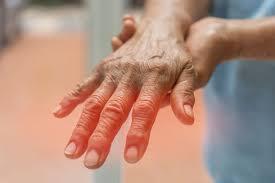Managing Dysesthesia: Treatment Tools That Help
Cuerpo
For people living with unusual sensations such as burning, crawling, stabbing, or electric shock–like jolts in their body, everyday life can feel overwhelming. These experiences are the hallmark of a neurological condition called Dysesthesia, an abnormal sensory response caused by faulty nerve signaling. While it is not always visible to others, its impact can be deeply disruptive.
Managing Dysesthesia requires a personalized approach, tailoring medical treatments, lifestyle adaptations, and emotional coping strategies to everyone's unique experience. Because each person experiences the condition differently, treatment plans need to be individualized and flexible. In this article, we will explore the most effective tools available for managing Dysesthesia, including medications, therapies, and daily adjustments that support long-term well-being.
Understanding Dysesthesia
Before diving into management, it is important to understand what Dysesthesia is. Unlike paresthesia (the mild "pins and needles" feeling most people know), Dysesthesia is more intense and often described as painful, raw, or intolerable.
The condition can arise from:
- Multiple Sclerosis (MS): Nerve demyelination disrupts communication between the brain and body.
- Diabetes: Nerve damage caused by prolonged high blood sugar (diabetic neuropathy).
- Spinal Cord Injuries: Disrupted pathways result in abnormal sensory feedback.
- Chemotherapy-Induced Neuropathy: Certain cancer treatments damage peripheral nerves.
- Postherpetic Neuralgia: Nerve damage that occurs after shingles.
Because Dysesthesia is a symptom rather than a disease, management must address both the underlying condition and the resulting sensations.
Medical Treatments for Dysesthesia
Modern medicine offers several approaches to managing Dysesthesia. These treatments aim to alleviate the severity of symptoms and enhance the quality of life.
-
Anticonvulsant Medications
Originally designed to control seizures, anticonvulsants help calm overactive nerve signalling.
- Gabapentin and Pregabalin are among the most prescribed, reducing burning and electric shock sensations.
- They may take several weeks to show results, and dosage often requires careful adjustment.
-
Antidepressants
Certain antidepressants also work well for nerve-related pain.
- Tricyclic antidepressants like amitriptyline help by altering pain perception in the brain.
- SNRIs (Serotonin-Norepinephrine Reuptake Inhibitors) such as duloxetine provide dual benefits by improving mood and reducing nerve pain.
-
Topical Treatments
For localized dysesthesia, topical creams or patches may provide relief.
- Lidocaine patches numb affected areas.
- Capsaicin creams reduce pain by desensitizing nerve endings with repeated use.
-
Pain Modulators
In severe cases, stronger pain relievers such as tramadol may be prescribed under strict supervision. These are generally considered a last resort due to the risks associated with dependency.
Lifestyle Approaches to Dysesthesia
Medications alone are often not enough. Integrating lifestyle strategies into daily routines can help reduce symptom severity and improve resilience.
-
Exercise and Movement
Gentle, low-impact activities improve circulation and promote nerve health.
- Yoga and tai chi enhance flexibility and reduce muscle tension.
- Swimming provides a soothing, low-resistance environment for movement.
-
Nutrition and Hydration
A balanced diet rich in vitamins and antioxidants supports nerve function.
- Vitamin B12 and omega-3 fatty acids are especially important for nerve repair.
- Staying hydrated prevents nerve irritability and fatigue.
-
Stress Reduction
Stress intensifies symptoms by heightening the nervous system's response.
- Mindfulness meditation and deep breathing exercises calm the mind.
- Progressive muscle relaxation reduces physical tension.
-
Sleep Hygiene
Since Dysesthesia often worsens at night, good sleep practices are critical.
- Maintain a regular bedtime routine.
- Use breathable fabrics and lightweight blankets to minimize irritation.
- Consider cooling or heating pads for symptom relief.
Physical and Occupational Therapy
Rehabilitation specialists play a key role in helping patients adapt to daily life with Dysesthesia.
- Physical therapy focuses on exercises that improve mobility, balance, and strength without worsening discomfort.
- Occupational therapy teaches practical strategies to reduce sensory triggers, such as choosing comfortable clothing materials or modifying workstations.
- Assistive devices, like cushioned seating or adaptive utensils, may also be recommended.
Alternative and Complementary Therapies
For many patients, non-traditional therapies provide meaningful relief when combined with medical treatment.
- Acupuncture
Some studies suggest acupuncture helps by stimulating natural pain-relieving pathways in the nervous system.
- Massage Therapy
Gentle massage promotes circulation and relaxation, though it must be tailored to avoid triggering sensitive areas.
- Biofeedback
This mind-body technique teaches individuals to control physiological functions such as muscle tension, helping to reduce sensory overload.
- Herbal Remedies
Supplements like turmeric or alpha-lipoic acid may provide antioxidant benefits. Patients should consult their doctor before use to avoid potential interactions with medications.
Coping Strategies for Daily Life
Practical adjustments can make a significant difference in comfort and functionality.
- Clothing Choices: Opt for loose, soft fabrics like cotton and avoid wearing rough or tight garments.
- Temperature Control: Maintain living spaces at a comfortable temperature, adjusting to what alleviates discomfort.
- Skin Care: Moisturizers and hypoallergenic soaps reduce irritation.
- Symptom Journaling: Tracking triggers and flare-ups helps refine treatment plans and strategies.
Emotional Well-being and Support
Chronic Dysesthesia often takes an emotional toll, leading to frustration, anxiety, or depression. Addressing mental health is not just important, it's essential. Patients should feel valued and cared for, knowing that their emotional well-being is a crucial part of their overall health.
- Counselling or Cognitive Behavioural Therapy (CBT) helps patients develop coping strategies and reframe negative thought patterns.
- Support Groups: Both online and in-person communities provide validation, tips, and emotional encouragement.
- Family Education: Teaching loved ones about Dysesthesia fosters understanding and reduces isolation.
Research and Future Directions
Although current management strategies provide relief, researchers are exploring more effective treatments for Dysesthesia. Advances in neuroscience are shedding light on how nerve pathways malfunction and how to correct them.
Key areas of investigation include:
- Neuroinflammation: Understanding how inflammation affects nerve signalling.
- Neuromodulation devices: Tools such as transcutaneous electrical nerve stimulation (TENS) and spinal cord stimulators.
- Regenerative therapies: Stem cell research to repair damaged nerves.
- Targeted pharmaceuticals: New medications designed specifically for neuropathic pain.
Conclusion
If you experience sudden, severe, or worsening symptoms, or if you have difficulty breathing or swallowing, seek immediate medical attention. Dysesthesia is a complex and often misunderstood condition that can significantly impact quality of life.
Most importantly, research continues to offer hope. Advances in neuroscience and ongoing dysesthesia treatment for clinical trails may soon bring new therapies that provide lasting relief for those navigating the daily challenges of this condition. This ongoing research should provide reassurance and optimism for those living with Dysesthesia.










Comentarios